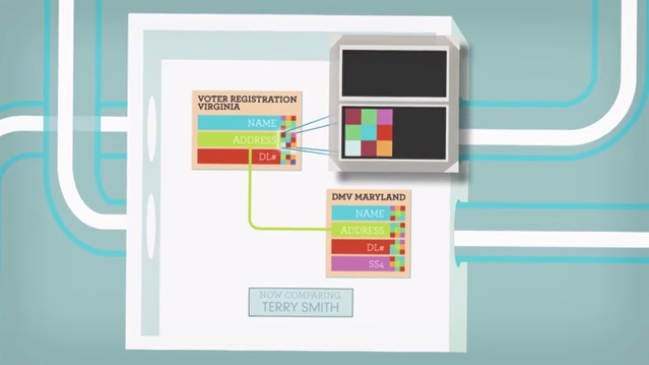Electronic Registration Information Center (ERIC)
ERIC's success
A recent evaluation by the Research Triangle Institute, or RTI, found that ERIC states demonstrated overall improvement in registration rates and reductions in reported registration-related barriers to voting, compared with non-ERIC states.
The Electronic Registration Information Center, or ERIC, is a multistate partnership that utilizes a sophisticated, secure data-matching tool to improve the accuracy and efficiency of state voter registration systems. ERIC is owned, managed, and funded by participating states and was formed in 2012 with assistance from The Pew Charitable Trusts.
ERIC comprises 11 states—Colorado, Connecticut, Delaware, Louisiana, Maryland, Minnesota, Nevada, Oregon, Utah, Virginia, and Washington—and the District of Columbia. More states are expected to join in the coming years. The center maintains an official website.
The challenge
Low registration rates and highly mobile populations often weaken the integrity of voter lists. About 1 in 8 registration records is inaccurate or out of date, a problem that can prevent qualified voters from casting a ballot. Most state registration systems rely on limited internal and cross-state data and paper-based tools, making it difficult to keep rolls clean and complete in a timely and cost-effective manner.
ERIC uses advanced technology to compare information on eligible voters from official data submitted by member states, such as voter registration rolls and motor vehicle records, as well as U.S. Postal Service addresses and Social Security death records. States then receive reports from ERIC that identify voters whose records might no longer be up-to-date, because they have moved, changed their names, or died.
ERIC can also identify potentially eligible citizens who are not registered to vote. In compliance with federal law, states then contact these individuals, encouraging them to register or update their voter records and to do so more efficiently: often via online systems and weeks or months in advance, rather than right at the deadline. Receiving information earlier in the election cycle enables state election officials to better manage voter registration lists, ensuring their integrity and mitigating the costly issues associated with inaccurate records, such as returned mail and provisional ballots.
Additional resources:
- Visit ERIC’s official webpage.
- Read the ERIC FAQ sheet.
- Read the full RTI evaluation.
- Watch this video to learn how ERIC works.
- Watch David Becker, Pew’s director of election initiatives,
and Jeff Jonas, IBM fellow and chief scientist, explain ERIC. - Check out this media coverage.
For more information, view Evaluation Finds ERIC Improves Election Performance.


America’s Overdose Crisis
Sign up for our five-email course explaining the overdose crisis in America, the state of treatment access, and ways to improve care
Sign up

This video is hosted by YouTube. In order to view it, you must consent to the use of “Marketing Cookies” by updating your preferences in the Cookie Settings link below. View on YouTube
This video is hosted by YouTube. In order to view it, you must consent to the use of “Marketing Cookies” by updating your preferences in the Cookie Settings link below. View on YouTube






